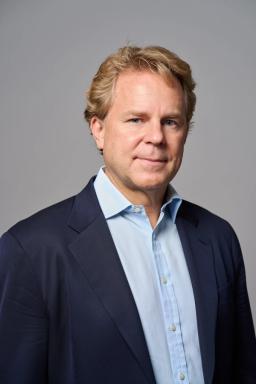
10 Minute Text

Justin Smith, CEO of Semafor, talks with Sowmyanarayan Sampath, CEO of Verizon Business, about Verizon’s bet on fixed wireless access (FWA) technology – and its goal of competing with cable companies.
Fixed wireless access, which uses 5G connectivity, offers the potential for ultra-high speeds, low latency, and massive capacity. The technology could enable users in digital deserts, places with little or no access to high-speed internet, to get online.
Justin Smith said:
J: Hi Sampath! I’m excited to chat. What have you been working on lately?

Sampath said:
S: Making 5G real. We were the first in the world to launch 5G, and now it’s about scaling that and bringing it to every home and business in America. Everyone thinks 5G is just fast 4G. We’re changing that perception and bringing some of the real capabilities of 5G.
Justin Smith said:
J: That sounds exciting, and like it could enable far-reaching internet access. Can you tell me a little more about how it works?

Sampath said:
S: For the past 30 years, the only way to get through broadband was through wires, either copper, coax, or fiber. That has fundamentally changed with fixed wireless access. Now wireless broadband is as good, if not better than wired.
Sampath said:
S: A bit on wireless has historically been a hundred times more expensive than a bit on wireline. That’s no longer the case with 5G, and because of that, the number of options customers have changed. Every single business in America, and almost every home, will now have another broadband provider at their service.
Justin Smith said:
J: It sounds like you want to compete against broadband cable companies. What makes you think you can win?

Sampath said:
S: Cable is not business grade, and more importantly, has a very, very low customer satisfaction score. Cable has -20 Net Promoter Score, and the wireless product we have is 40 NPS. It’s not that tough.
Justin Smith said:
J: Cable companies aside, for a moment. Is there a difference between Verizon’s FWA and other carriers’?

Sampath said:
S: Verizon has a history of building quality networks and fine-tuning system performance. We have more depth of spectrum, including millimeter wave, and also have built out our own fiber, which gives us more scalability down the line.
Justin Smith said:
J: This kind of fixed wireless access has been around for a while. Why is Verizon prioritizing it now?

Sampath said:
S: The economics make sense now. Previously, we haven’t been able to make it work. By adding more spectrum, building more sites, and, in many cases, building back our own backhaul fiber, we’re in a position, now, for success. Also, FWA uses the same infrastructure we use for our mobile business. It’s a little incremental cost, but a lot of incremental revenue.
Justin Smith said:
J: Does the network have enough capacity to meet demand? Won’t you run out?

Sampath said:
S: Because of all the spectrum we bought in C band and millimeter wave, we have almost unlimited capacity. Capacity is a function of the amount of spectrum, number of sites, and amount of spectral efficiency. We are seeing step function improvement in all three.
Sampath said:
S: When sites fill up, we’ll add more sites next to them. Because we own our backhaul fiber for most of our sites, it’s easy for us to do.
Justin Smith said:
J: I imagine this will unlock a lot of new opportunities, for business and day-to-day life alike. What are some use cases you already see in the market?

Sampath said:
S: It opens up new markets for us in being a national broadband provider. But more importantly, it enables specific business use cases, like private networks and mobile edge computing.
Sampath said:
S: We are also seeing good growth in private networks. These are networks that tend to operate within a close geography and provide significantly better coverage and reliability than Wi-Fi. Private networks can be used for mission-critical applications.
Justin Smith said:
J: How will this help bridge the digital divide?

Sampath said:
S: The digital divide can be broken up into accessibility, affordability, and use ability. Fixed wireless access addresses all three. Imagine you can get a home broadband connection in a rural market for $25 a month. That’s essentially what this does.
Sampath said:
S: Also, the product is very easy to use. You literally plug it in, wait for two minutes, and then start using it. You don’t need to stay at home for hours waiting for a technician appointment to get online.
Justin Smith said:
J: Thanks Sampath. So interesting and so impressive! Really appreciated the text chat. Best of luck with all these initiatives!
